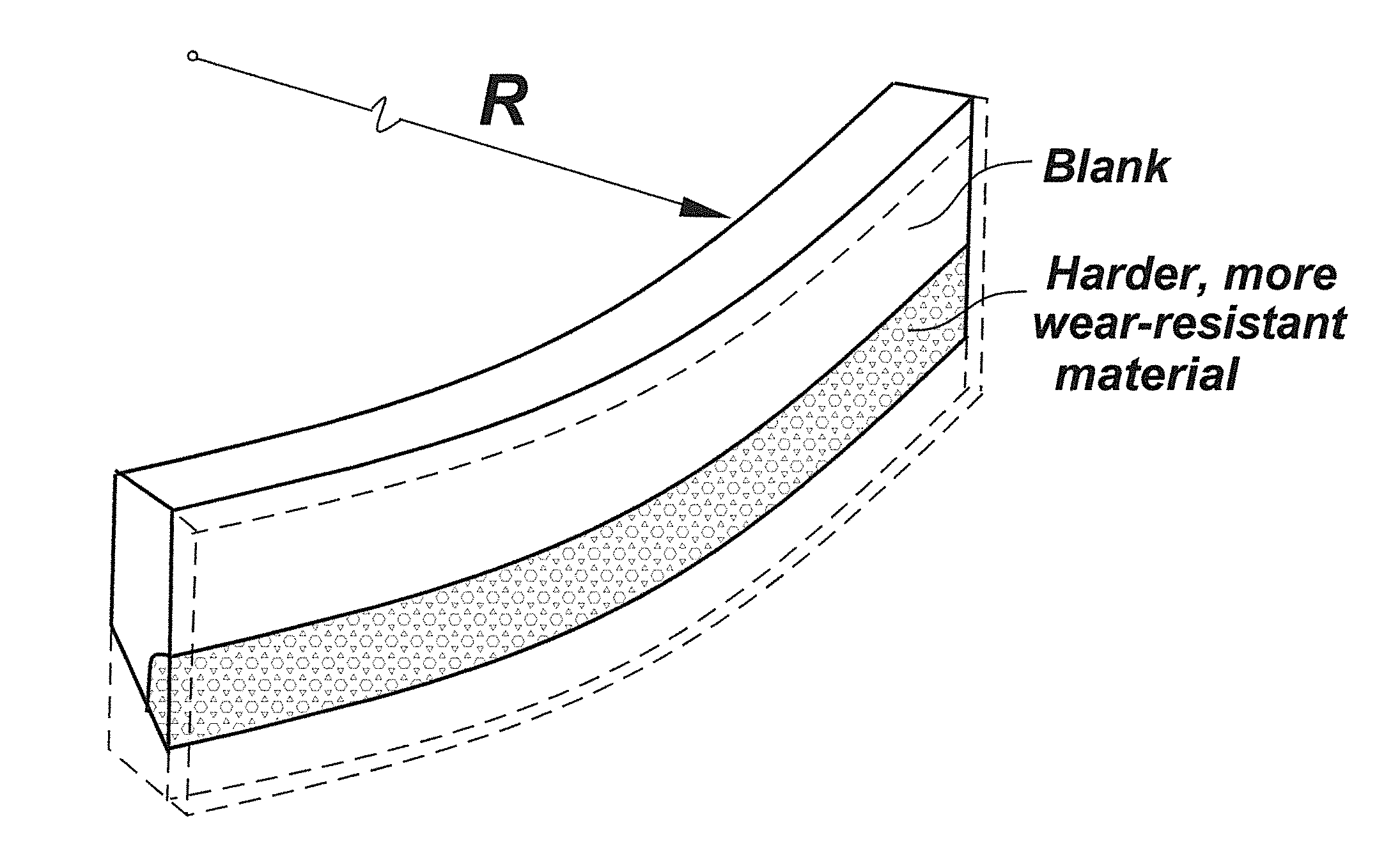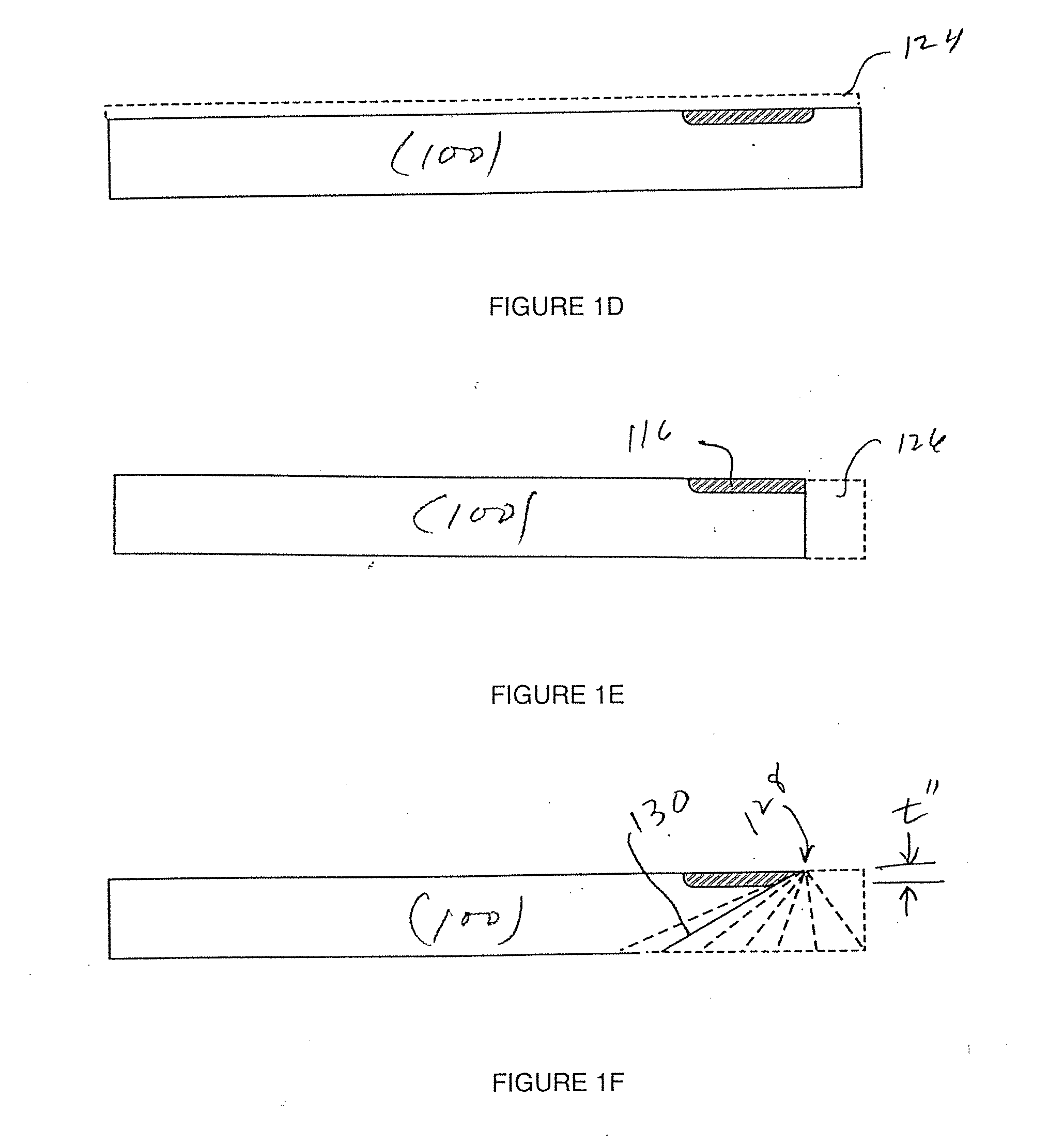Method of manufacturing of cutting knives using direct metal deposition
a manufacturing method and cutting knife technology, applied in the field of cutting knives, can solve the problems of limited life of conventional heat-treated edges presently in use, and achieve the effects of reducing costs, prolonging service life, and improving micro-structure and mechanical properties
- Summary
- Abstract
- Description
- Claims
- Application Information
AI Technical Summary
Benefits of technology
Problems solved by technology
Method used
Image
Examples
Embodiment Construction
[0028]As an introduction, commonly assigned U.S. Pat. No. 6,122,564 describes a laser-aided, computer-controlled direct metal deposition (DMD) system wherein successive layers of material are applied to a substrate so as to fabricate an object or provide a cladding layer. The deposition tool path may be generated by a computer-aided manufacturing system, and feedback monitoring may be used to control the dimensions and overall geometry of the fabricated section in accordance with a computer-aided design description.
[0029]DMD systems are capable of depositing sections on metallic substrates of a differing material than used in the deposition, on the condition that suitable choices of material are made and suitable surface treatment is performed to achieve a good metallurgical bond between the deposited material and the underlying substrate.
[0030]This invention extends and improves upon the teachings set forth in the '564 Patent, the entire content of which is incorporated herein by r...
PUM
| Property | Measurement | Unit |
|---|---|---|
| cutting angles | aaaaa | aaaaa |
| Ra | aaaaa | aaaaa |
| thickness | aaaaa | aaaaa |
Abstract
Description
Claims
Application Information
 Login to View More
Login to View More - R&D
- Intellectual Property
- Life Sciences
- Materials
- Tech Scout
- Unparalleled Data Quality
- Higher Quality Content
- 60% Fewer Hallucinations
Browse by: Latest US Patents, China's latest patents, Technical Efficacy Thesaurus, Application Domain, Technology Topic, Popular Technical Reports.
© 2025 PatSnap. All rights reserved.Legal|Privacy policy|Modern Slavery Act Transparency Statement|Sitemap|About US| Contact US: help@patsnap.com



